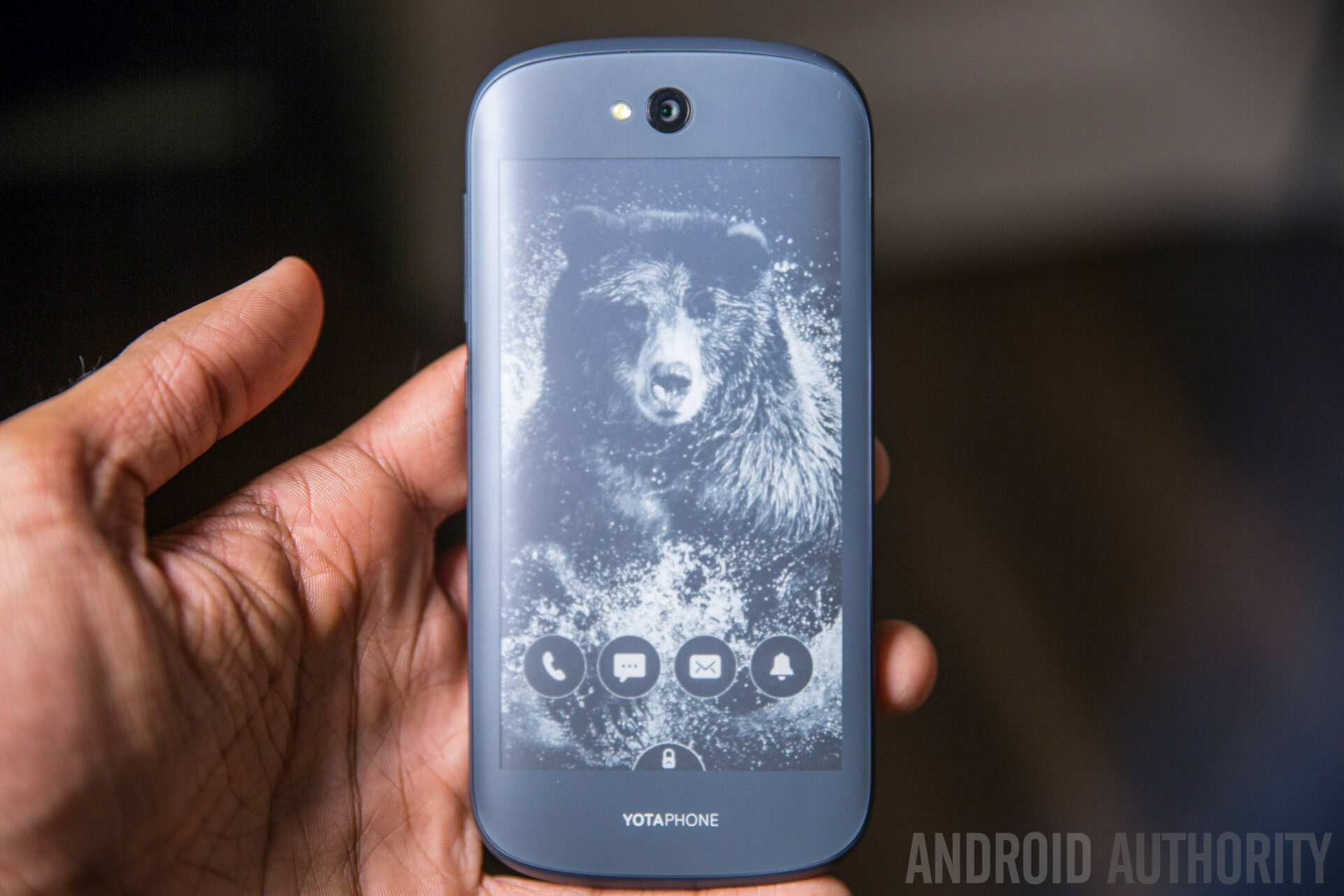Affiliate links on Android Authority may earn us a commission. Learn more.
Interview with Yota Devices CEO at CES 2015
Published onJanuary 8, 2015
In terms of design, the modern smartphones we see today basically all feature the same design: a plastic or aluminum chassis and a flat screen on the front. Sure, there are companies trying to change that like Samsung and their Galaxy Note Edge or LG and their recently-announced G Flex 2, but there is one company out there that is really innovating when it comes to design. Yota Devices is a Russian smartphone manufacturer that has come up with an awesome idea to make our smartphones much more useful, and their idea is quite simple. The company created a smartphone with a normal AMOLED display on the front, but they also included a low-power E Ink display on the back of the device. The company’s first iteration came to market as more of a prototype back in 2012, and has since improved on the design and functionality with their second iteration, the YotaPhone 2. At CES 2015, we got the chance to speak with Vlad Martynov, CEO of Yota Devices, and he sheds some light on what it takes to build such a device, the company’s overall vision and much more!
Yota Devices began with a big vision as a startup company three years ago, without much knowledge on smartphones or supplies to mass-produce devices. Through having a great idea and passion to bring an innovative device to market, Yota Devices eventually convinced suppliers and investors to get behind the project. Qualcomm and E Ink are the notable manufacturers Yota roped in to their idea, and ever since they were on board, Yota Devices knew they had a big future ahead of them.

When it comes to moving this dual-screen technology to multiple devices, Vlad explains that the company is just sticking to smartphones for now. The company has entertained the idea of creating a tablet with an E Ink display on the back, but one of the biggest problems with current smartphones is battery life, and Yota Devices aims to solve that problem. The YotaPhone 2 is a huge step forward for the company, as it’s the company’s first device meant for mainstream use.
One of the biggest problems with current smartphones is battery life, and Yota Devices aims to solve that problem.
See also: E Ink Prism demo and interview at CES
So, what can we expect from a YotaPhone 3? Vlad mentions that the company is working with E Ink to bring a faster refresh rate, improved contrast, and potentially the addition of another color. Yota Devices hopes to keep the same concept for their next iteration, only with much more content and services to use on the rear-facing display.
Yota Devices has a great product and idea on their hands, and we’re really excited to see what’s to come for the company in 2015 and beyond. If you’d like some more info on the YotaPhone 2, check out our full review! Also, be sure to stay tuned with Android Authority for the best coverage of CES 2015.